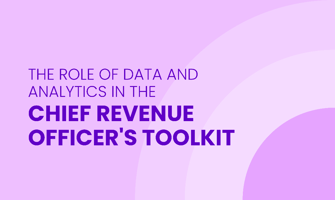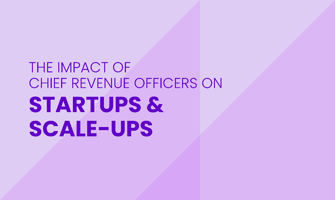Chief Revenue Officers (CROs) are essential for driving a company's financial growth and success....
CRO vs CFO vs COO - Similarities and Differences
Understanding the roles of the Chief Revenue Officer (CRO), Chief Financial Officer (CFO), and Chief Operating Officer (COO) is essential for comprehending how organizations function at their highest levels.
This article explores the similarities and differences among these key C-suite positions, which are high-level executive roles within a company. You understand how each role contributes uniquely to an organization's success, focusing on its primary objectives, key responsibilities, required skill sets, impact on company performance, and reporting and collaboration dynamics.
This comparison highlights the unique and overlapping aspects of the CRO, CFO, and COO functions, providing a clear view of their similarities and differences.
Understanding the CRO, CFO, and COO Roles
The C-suite refers to the highest-ranking executives in a company, whose titles often start with the letter "C" for "Chief." These leaders are important for strategic decision-making and overall leadership, guiding the company's direction and success.
Understanding the specific functions and contributions of the Chief Revenue Officer (CRO), Chief Financial Officer (CFO), and Chief Operating Officer (COO) helps to clarify their unique and overlapping responsibilities.
Chief Revenue Officer (CRO): The CRO is primarily responsible for driving revenue growth. This involves developing and implementing sales strategies, identifying new market opportunities, and optimizing the customer journey to maximize revenue. The CRO works closely with the marketing and sales teams to ensure that all efforts are aligned with the company's revenue goals.
Chief Financial Officer (CFO): The CFO manages the company's financial health. This includes overseeing financial planning and analysis, budgeting, forecasting, and risk management. The CFO ensures that the company remains financially viable and compliant with regulatory requirements. They also play a key role in strategic planning by providing financial insights and guidance to support decision-making.
Chief Operating Officer (COO): The COO oversees the company's day-to-day operations. This role involves ensuring that business operations are efficient and effective, managing the supply chain, and overseeing production and quality control. The COO ensures that the company's operational activities align with its strategic goals, working to improve processes and systems to support overall business performance.
![]()
Similarities in CRO, CFO, and COO Functions
1. Strategic Planning
Strategic planning involves defining a company's long-term direction and setting goals to achieve its vision, including the allocation of resources to pursue these objectives effectively.
The CRO aligns sales initiatives with the company's strategic vision by developing sales strategies that target new markets and optimize the customer journey. This involves market research, competitor analysis, and leveraging customer feedback to identify growth opportunities and enhance customer satisfaction.
The CFO forecasts financial trends by analyzing market conditions, economic indicators, and internal financial data. They set financial targets, develop budgets, and ensure that financial resources are allocated efficiently to support the organization's strategic goals. The CFO also plays a key role in risk management and investment planning.
The COO ensures the company's operational capabilities can support strategic plans by designing and implementing efficient processes and systems. They focus on improving productivity, quality, and cost-effectiveness. The COO also coordinates between different departments to ensure alignment and seamless execution of the strategic plan.
All three roles contribute to the strategic planning process by ensuring that sales, financial, and operational strategies are aligned with the company's long-term goals. They collaborate to create a cohesive plan that leverages their respective areas of expertise to drive the organization forward.
2. Executive Leadership
Executive leadership involves guiding the organization through decision-making processes, setting a clear vision, and inspiring teams to achieve common goals.
The CRO advocates for revenue-centric strategies, influencing product development and market approaches to drive sales and customer acquisition. They work closely with the marketing team to create campaigns that resonate with target audiences and drive engagement, ensuring that the company's sales efforts are aligned with overall business objectives.
The CFO ensures that all strategic decisions are financially sound by evaluating the financial impact of various initiatives. They provide insights into cost management, profitability, and financial sustainability, ensuring that the company remains fiscally responsible while pursuing growth opportunities. The CFO also plays a pivotal role in financial reporting and compliance.
The COO acts as the operational leader, translating strategic plans into actionable tasks and ensuring that the organization operates efficiently. They oversee daily operations, manage resource allocation, and implement process improvements to drive operational excellence. The COO also ensures that the company's infrastructure and capabilities are scalable and adaptable to future growth.
Each executive plays a critical role in leadership, ensuring that their decisions are aligned with the company's strategic vision. The CRO, CFO, and COO work together to create a unified leadership team that drives the organization toward achieving its goals.
![]()
3. Performance Metrics
Performance metrics are critical for measuring the effectiveness and efficiency of various business functions, providing a basis for continuous improvement.
The CRO tracks metrics related to revenue growth, conversion rates, and customer retention, using these insights to refine sales strategies and improve customer engagement. They may also monitor customer lifetime value (CLV) and sales cycle length to optimize sales processes and enhance overall profitability.
The CFO monitors financial health metrics such as cash flow, profit margins, and cost structures. They use these metrics to assess the company's financial stability and identify areas for cost reduction or investment. The CFO also tracks return on investment (ROI) for various projects and initiatives, ensuring that the company's financial resources are utilized effectively.
The COO oversees operational metrics such as supply chain efficiency, production yield, and quality control. They analyze these metrics to identify bottlenecks, streamline processes, and enhance operational efficiency. The COO also monitors employee productivity and resource utilization, ensuring that the company's operations align with strategic goals and are capable of supporting future growth.
All roles rely on performance metrics to evaluate success and drive improvements. By focusing on specific metrics, they ensure that their departments operate efficiently and contribute to the company's overall success.
4. Stakeholder Communication
Stakeholder communication involves effectively conveying information to various parties involved with the company, ensuring transparency, and fostering trust.
The CRO engages with customer-oriented stakeholders, such as clients and partners, to communicate the company's sales strategies and performance. They build strong relationships by addressing customer needs, providing solutions, and ensuring that the company's value proposition is clearly understood. The CRO also gathers feedback to continuously improve customer satisfaction.
The CFO communicates with investors, analysts, and regulatory bodies, providing insights into the company's financial health and strategies. They present financial reports, performance analyses, and future projections to build confidence and support for the company's strategic initiatives. The CFO also ensures compliance with financial regulations and standards.
The COO interacts with internal teams and vendors, ensuring that operational strategies are understood and executed effectively. They facilitate cross-departmental collaboration, address operational challenges, and ensure that resources are allocated efficiently. The COO also communicates with suppliers and service providers to maintain strong partnerships and ensure the smooth functioning of the company's operations.
Effective communication with stakeholders is essential for all three roles. The CRO, CFO, and COO each focus on their specific audiences, but all aim to ensure transparency, build trust, and foster strong relationships that support the company's strategic objectives.
5. Resource Management
Resource management is the process of utilizing a company's resources—financial, human, and physical—effectively and efficiently to achieve organizational goals.
The CRO optimizes the use of sales and marketing resources by developing strategies that maximize revenue and customer engagement. This includes allocating budgets for marketing campaigns, training sales teams, and investing in tools that enhance sales performance. The CRO also monitors resource utilization to ensure that efforts are focused on the most impactful activities.
The CFO manages the allocation of financial resources, balancing investment and savings to align with strategic plans. They develop budgets, monitor expenditures, and ensure that funds are allocated to projects with the highest potential return. The CFO also manages financial risks, ensuring that the company maintains a healthy financial position.
The COO oversees the management of physical and human resources, building efficient systems and workflows that can adapt to changing business demands. They implement processes to optimize resource utilization, reduce waste, and improve productivity. The COO also focuses on employee development and retention, ensuring that the workforce is skilled, motivated, and capable of supporting the company's growth objectives.
Each role is responsible for managing different types of resources to support the company's strategic goals. By coordinating their efforts, the CRO, CFO, and COO ensure that all resources are used efficiently to achieve optimal outcomes, supporting sustainable growth.
Differences in CRO, CFO, and COO Functions
1. Primary Objectives
The CRO focuses on driving revenue growth by developing and implementing strategies to maximize sales and enhance customer relationships. Their primary goal is to increase the company's revenue through effective sales and marketing tactics.
The CFO manages the company's finances, ensuring the organization is financially healthy and sustainable. Their main objective is to maintain financial stability, manage financial risks, and provide accurate financial reporting.
The COO aims to optimize the business's operations, ensuring efficiency and top performance at every level of the organization. Their focus is on operational efficiency, process improvements, and ensuring that the company’s operations align with strategic goals.
The CRO's objective is revenue generation, the CFO's objective is financial health, and the COO's objective is operational efficiency. These distinct goals highlight the unique contributions each role makes to the company’s success.
![]()
2. Key Responsibilities
The CRO is proactive in sales management, lead generation, and customer success. They constantly innovate in response to market trends, develop sales strategies, and manage the sales team to achieve revenue targets.
The CFO handles complex financial strategies, risk management, and corporate finance. They are responsible for financial planning, budgeting, and ensuring the company complies with financial regulations.
The COO oversees day-to-day operations, including production, quality assurance, and supply chain optimization. They manage the operational processes to ensure efficiency and effectiveness across the organization.
The CRO focuses on sales and customer relations, the CFO on financial management, and the COO on operational management. These responsibilities reflect the specialized nature of each role in supporting the company’s overall objectives.
3. Required Skill Sets
A CRO must excel in strategic sales planning, business development, and customer retention strategies. They need strong skills in market analysis, sales tactics, and relationship management. Additionally, they must be adept at interpreting market trends and customer feedback to refine sales approaches continuously.
The CFO requires a deep understanding of financial principles, tax complexities, and strategic fiscal management. They must be proficient in financial analysis, risk management, and regulatory compliance. Additionally, the CFO needs strong skills in investment planning and financial forecasting to guide the company’s financial strategy effectively.
The COO should possess strong operational knowledge, skills in process reengineering, and the ability to manage large teams effectively. They need expertise in project management, operational efficiency, and leadership. Moreover, the COO must be capable of implementing process improvements and managing supply chain logistics to ensure smooth operations.
The CRO needs skills in sales and customer engagement, the CFO in financial management and analysis, and the COO in operations and process improvement. These distinct skill sets are essential for each role to fulfill its specific responsibilities effectively.
4. Impact on Company’s Performance
The CRO directly affects the company's bottom line through revenue generation and market share increase. Their efforts drive sales growth and expand the customer base. By focusing on customer acquisition and retention, the CRO ensures sustained revenue growth.
The CFO ensures financial stability, directly affecting the organization's economic position and investor relations. Their work in financial planning, budgeting, and risk management secures the company’s financial future. The CFO’s ability to maintain accurate financial reporting and compliance also builds investor confidence and supports the company’s creditworthiness.
The COO influences the execution of all operational efforts, impacting product quality, customer service, and time to market. They ensure that the company operates smoothly and efficiently. By optimizing processes and enhancing productivity, the COO ensures that the company can deliver high-quality products and services promptly.
The CRO impacts revenue and market presence, the CFO impacts financial stability and investor confidence, and the COO impacts operational efficiency and product delivery. Each role contributes to different aspects of the company’s performance.
5. Reporting and Collaboration
The CRO typically reports to the CEO and collaborates heavily with marketing and sales teams to drive growth. They work closely with these teams to develop and implement sales strategies. The CRO also collaborates with customer service teams to ensure a seamless customer experience.
The CFO also reports to the CEO, but their collaborations are more focused on interaction with the board, investors, and regulatory authorities. They ensure financial compliance and health through these interactions. The CFO often works with department heads to align financial strategies with business objectives and ensure accurate budget implementation.
The COO, while also reporting to the CEO, must work alongside nearly every department to ensure operational cohesiveness and excellence. They collaborate with various teams to optimize operational processes and implement strategic initiatives. The COO works closely with the HR department to manage workforce planning and development, ensuring that the company has the necessary talent and skills to achieve its operational goals.
The CRO collaborates mainly with sales and marketing, the CFO with the board and financial stakeholders, and the COO with multiple departments. These differences in collaboration reflect the unique roles and contributions each executive makes to the organization.
![]()
Conclusion
Though the roles of the CRO, CFO, and COO share common ground in areas such as strategic planning, executive leadership, and resource management, they differ significantly in their primary objectives, key responsibilities, required skill sets, impact on company performance, and reporting and collaboration dynamics. By understanding these differences, we gain a deeper appreciation of how each executive's unique focus and expertise contribute to the overall success and resilience of a company. The collaboration among these roles ensures a balanced approach to driving growth, maintaining financial health, and optimizing operations, ultimately shaping a robust organization poised to achieve its strategic goals.
FAQs
What is a Contract Research Organization (CRO) and how does it support clinical research and annual revenue?
A Contract Research Organization (CRO) is a service provider that assists pharmaceutical, biotechnology, and medical device companies with clinical research, including clinical trials. CROs offer a range of services such as clinical trial management, medical monitoring, and quality audits. They ensure compliance with regulatory aspects and provide professional quality assurance. By leveraging a global network, CROs help sponsors efficiently manage resources and navigate the complexities of clinical research.
How do CROs utilize blockchain technology in clinical trial management, resources, and quality audits?
CROs are increasingly using blockchain technology to enhance clinical trial management. Blockchain ensures secure and transparent transactions, tracking progress, and data integrity throughout the clinical trial process. By using platforms like Ethereum and Cosmos, CROs can manage decentralized identities and maintain an immutable record of clinical trial data, which helps in meeting regulations and improving overall efficiency.
What role does a global network play in the operations of a CRO?
A global network is crucial for a CRO as it provides access to a wide range of resources and expertise from various regions. This network enables the efficient conduct of clinical trials across multiple countries, helping sponsors reach a diverse patient population and expedite drug development. The global network also supports the interoperability of clinical trial data and ensures that trials meet international regulatory standards.
How do CROs impact the market size and growth of the pharmaceutical industry, consultation, and meeting regulations?
CROs significantly impact the market size and growth of the pharmaceutical industry by accelerating the clinical trial process and optimizing resource utilization. Their expertise in clinical trial management and regulatory compliance helps sponsors bring new drugs to market faster, increasing annual revenue and expanding the overall market size. CROs also enhance the success rate of clinical trials through professional quality assurance and effective management of adverse events.
What services do CROs provide to ensure the success of clinical trials?
CROs offer a variety of services to ensure the success of clinical trials, including clinical trial management, consultation on regulatory aspects, and medical monitoring. They also provide support in tracking progress and ensuring professional quality assurance through quality audits. Additionally, CROs utilize blockchain technology to manage secure data transactions and payment platforms, enhancing the efficiency and transparency of the clinical trial process.




